SKL is reader supported. When you buy through links on our site, we may earn affiliate commission. Learn more here.
Updated: April 21, 2023
So you’ve quit fast fashion but now you’re wondering how to convince your friends and family to do the same…
The good news is that giving up fast fashion comes with a lot of benefits. If you’ve already said goodbye to fast fashion and its harmful environmental impact, you know that it’s worth it to pursue a more sustainable lifestyle for the sake of the planet and your own life.
Now, you want to invite the people in your life to do the same!
But talking about fast fashion and its shortcomings is complex. It’s not as simple as “quitting fast fashion” and shopping elsewhere. Conversations around fast fashion bring up all sorts of complicated topics like personal finances, inclusivity, accessibility, and more.
In This Post We Will Answer The Hard To Answer Fast Fashion Questions.
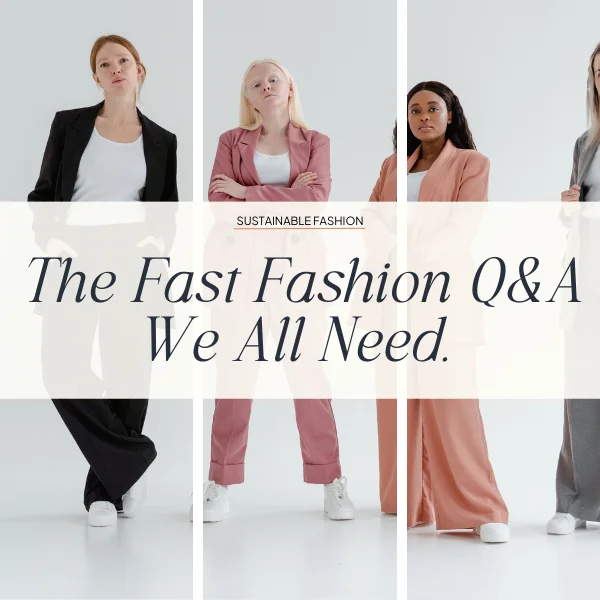
This guide will walk you through how you can talk your loved ones through the nuances of the fashion industry to reach a better understanding of why sustainability matters.
It will tackle the tough topics and offer some perspective you can bring into your next conversation about fashion.
Given the urgency of the climate crisis and the continued growth of harmful fashion brands, we need more and more people to ditch fast fashion and learn how to be more sustainable.
Giving up fast fashion is not easy.
The complexities and personal nature of fashion means giving up fast fashion isn’t always easy. There are legitimate barriers to shopping sustainably, such as lack of size inclusivity, higher price points, less immediate availability, barriers to thrifting, etc. These are vital considerations when it comes to how we talk about fast fashion.
At the core, these obstacles demonstrate that we cannot be so loud in our advocacy to quit fast fashion if we are not willing to address the nuances and luxury of choice that many don’t have.
I’m not saying that we shouldn’t be vocal about the problems of fast fashion— absolutely, we should be.
Education is at the core of a more sustainable future.
Rather, I’m saying that we cannot lace the conversation in shame and in a binary perspective that the solution is for everyone to stop shopping fast fashion because “it’s bad.”
It’s too reductive and it harms those that may want to engage in sustainability but feel isolated by the condemning tone many of us carry about the business model that they feel they have no other choice than to shop.
Therefore, let’s educate ourselves about the intricacies and barriers to sustainable fashion so that we can hold conversations and offer solutions with more grace and understanding.
How do we approach conversations about fast fashion?
While the fast fashion business model is incredibly harmful, we can’t deny that it made shopping easier for many. This ease has opened the door for overconsumption and mindless shopping, but it has also created opportunities for many to access fashion in a way they hadn’t been able to before.
One example of this is how ultra-fast fashion (the massive online-only stores like SHEIN) has played a key role in catering to larger body types and made sizing more inclusive and accessible. The low prices combined with convenience of online or mall shopping has made fast fashion an affordable option for those with lower household income and those that are time-poor. We will explore these areas in more depth later on.
Therefore, we first must approach conversations with understanding that some people have more limitations to sustainable options than others. This means that our conversations should be open-minded, kind, and non-judgemental. The goal is not to shame someone to change (that rarely works), but rather to warmly invite them to alternatives.
Also, consider what changed or opened your mind and convinced you to quit fast fashion. Could that same information persuade your loved one? Could you appeal to their values and perspective in the conversation rather than centering your own? Listen attentively to their concerns and learn from them. Don’t engage in the discussion just to convert them.
Rethinking Our Consumer Behavior
When it comes to getting people to rethink their behavior, here are some ideas from organizational psychologist Adam Grant and his book Think Again:
- You can’t bully someone into agreeing with you. Ask “what would change your mind?” and allow their motivations and terms to direct the conversation.
- Acknowledge common ground. Finding areas where you agree (especially acknowledging the limitations of the fashion industry) demonstrates that you’re willing to consider the other person’s point of view and can find common truths, encouraging the other person to do the same. Also, recognizing gray areas and caveats doesn’t sacrifice your credibility— it encourages you both to be more open and curious.
- Don’t pile on. If you offer too many reasons to support your case (while there can be many when it comes to sustainability in fashion), it can make your loved one defensive rather than open. Stick to a few strong points.
- Reinforce freedom. Respect the other person’s right to choose and decide for themselves. Often, we don’t like the idea of being controlled which can cause us to reject an idea altogether if we feel like we’re being pressured. Be a safe place for your loved ones to question or discuss these topics— not one they want to avoid out of fear of being preached at or judged.
Your Uncomfortable Fast Fashion Questions, Answered!
Now that we’ve laid a framework for how to approach and think about these conversations, let’s dig into some of the top questions and concerns people voice around sustainability and fashion.
First, if you need more of an overview of why sustainable fashion matters and how fast fashion is harmful, read here. The following will touch on some of those issues, but it’s more intended to address the complexity and follow-up questions people often have. Here are some of the questions you may come up against in having these conversations and how you can address them:
If fast fashion is so bad, why isn’t the government stopping them?
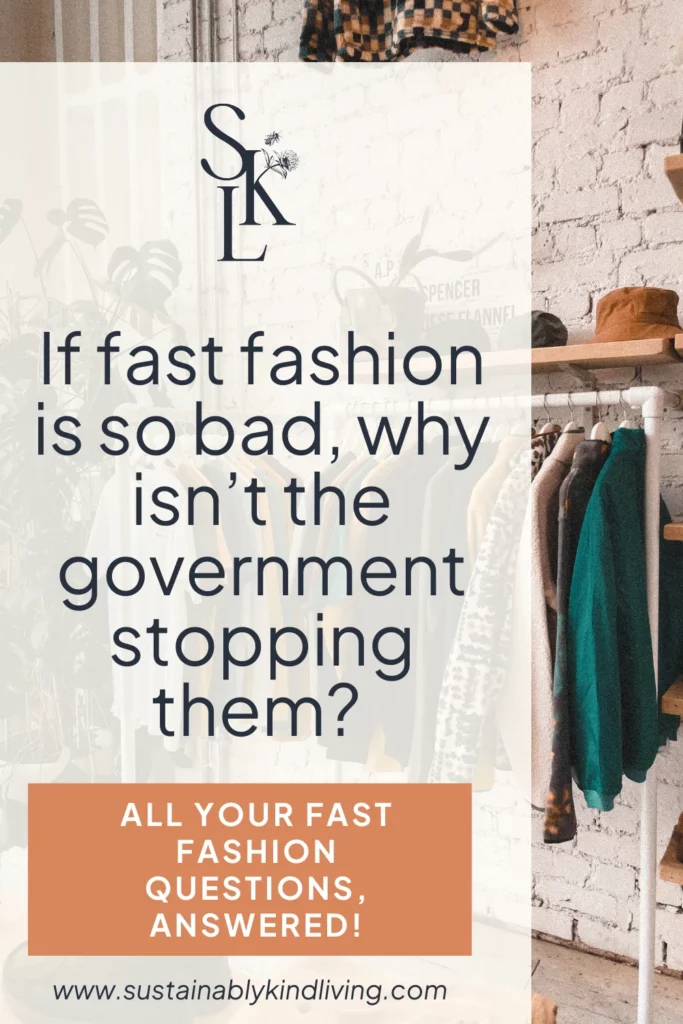
Within a capitalist society, government structures err on the side of less regulation in order to allow for competition to drive business growth.
The idea is that if businesses have less government intervention, they will have more freedom to innovate and find motivation to succeed by beating out competition by offering a better product, ultimately serving both the business and the customer.
The problem with this is that no foundation for ethical standards were established. Therefore, capitalism became about chasing growth and profit at the expense of people and planet. Competition created an environment where fast fashion brands prey on less developed economies and countries in order to drive down operating costs by exploiting the global workforce.
So, why hasn’t the government interceded?
Up until recently, globalization has “benefited” rich, western countries. It has allowed our companies to make more money by using and abusing workers in different countries who have no bargaining power.
Additionally, there’s a lack of transparency and knowledge. Many fashion brands don’t even know about the conditions of their own supply chain. They deliberately use layers of contracting factories so that they don’t have to be liable for the workforce. It’s hard to monitor and regulate a system you can’t even trace, especially across multiple countries.
That being said, in the last couple years, several pieces of legislation have been introduced that are working to intervene and address the issues in the fashion supply chain. They are introducing the ethical standards and regulations that should have been implemented (not assumed) from the beginning.
These bills include the Garment Worker Protection Act which addresses wage theft in California, the New York Fashion Act which requires supply chain mapping and disclosure, and the FABRIC Act which aims to increase the ethics of American garment manufacturing across the board.
Shouldn’t the corporations be responsible for changing, not me?
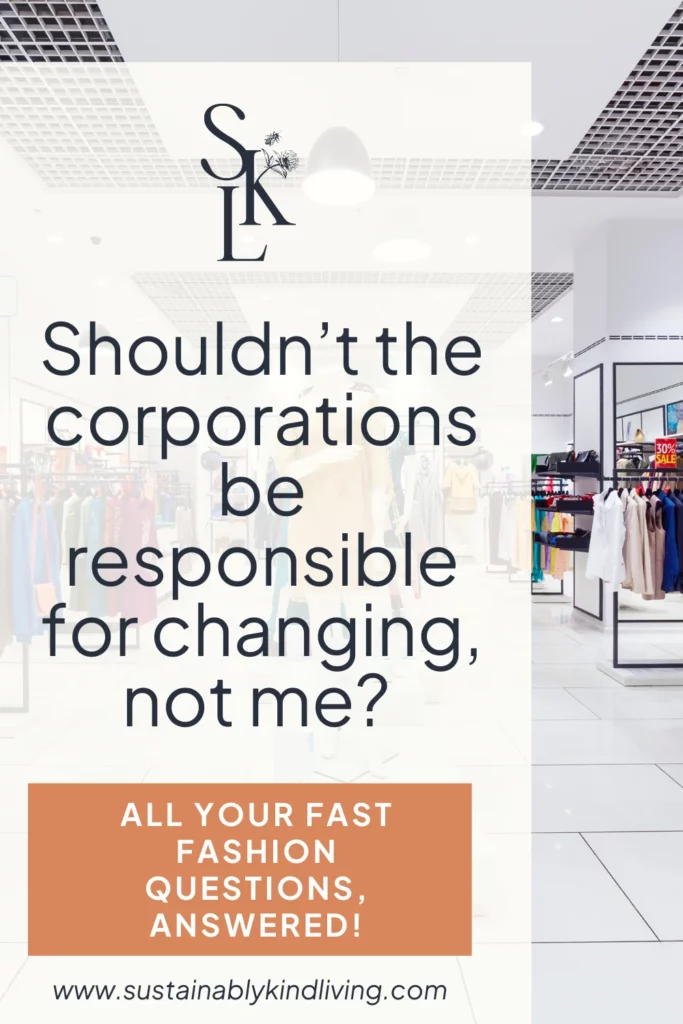
Ultimately, systemic change requires government and corporate participation.
We exist in systems that enable excess consumption and perpetuate exploitation. We need the corporations and larger institutions to take responsibility for their role in all of it. Their changed actions are what will create the more seismic shifts we need.
We need corporations to change, to stop overproducing, to dramatically cut emissions. We need governments to step up and regulate and incentivize the necessary changes.
The reason individuals’ actions matter is because of the big picture role they play.
Businesses shift their behavior based on what consumers indicate they want and will buy. Thus, when a lot of people shift their own actions to prioritize sustainability, businesses will follow suit because they want those customers.
They want to supply what the consumer is demanding. While corporations are ultimately responsible for their negligence, we still participate in the problem. When we consume thoughtlessly, we become a number brands use to justify overproduction and consumption.
In the same way, governments are fundamentally accountable to their constituents. So when citizens indicate support for certain policies or regulation, policymakers should follow suit.
That’s why individual actions matter.
But those actions are more effective when they are practiced collectively. So, we need a lot of people recognizing their role in the necessary changes and acting accordingly so that we can make a bigger impact faster by catalyzing change at scale.
Isn’t it better for a garment worker to have that job rather than no job at all?
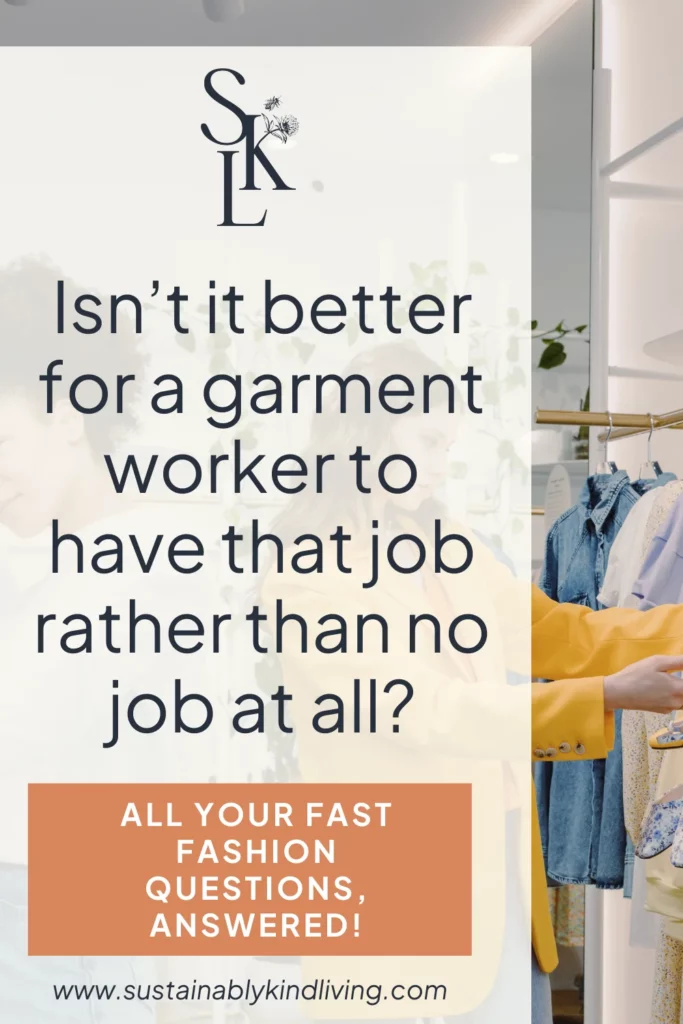
Should working 16+ hour days in unsafe places where abuse is common and health is at risk all while being paid cents or dollars on the hour be the standard?
Of course not!
One thing to keep in mind is that these jobs aren’t serving these people— the work is putting their lives at risk.
These jobs are keeping the workers in a cycle of poverty— not helping them get out of it. So we can’t let the idea that a job is better than no job keep us from doing something.
Rather, choosing not to support these brands (and vocally holding them accountable for their unethical practices) sends the signal that if these brands want people to buy from them, they need to shape up.
The hope is that we can make their existing jobs better (via public pressure, legislation, accountability) rather than boycotting to the point of factory closure (which is unlikely that the boycotts would occur in numbers or quick enough to do this).
As more and more people change their consumption habits and push for better, these brands will have to step up and change if they want to stay relevant! So that’s where the power of our action comes in!
Would boycotting fast fashion put a garment worker out of a job?
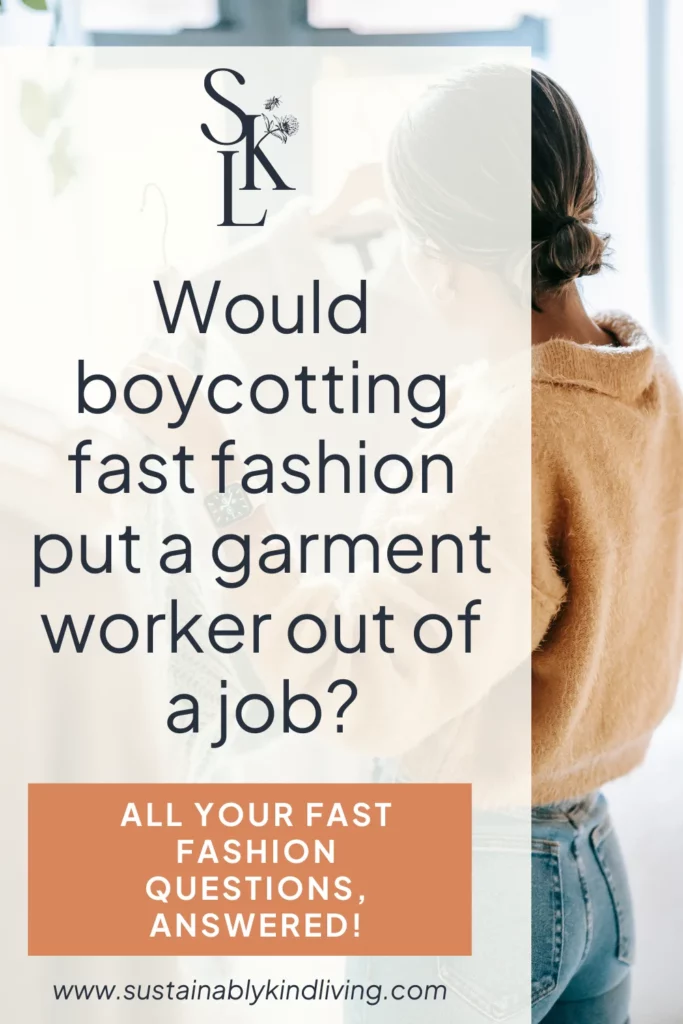
As Ayesha Barenblat, founder of fashion advocacy non-profit Remake, put it, “It’s a race against time to support garment makers by using our activist voices to hold brands accountable to keep her safe and pay her more. . . And until then, isn’t it better to spend our hard-earned dollars on brands that leave her better off? Shouldn’t we be sure our purchases don’t hurt garment makers more than they help her? In short, I hate the question — Aren’t sweatshop jobs better than no jobs? Because we owe the makers of our clothes and our planet more than that.”
I am an extended size and I can’t find any cute sustainable fashion options. Fast fashion is the only place I can find affordable, trendy outfits!
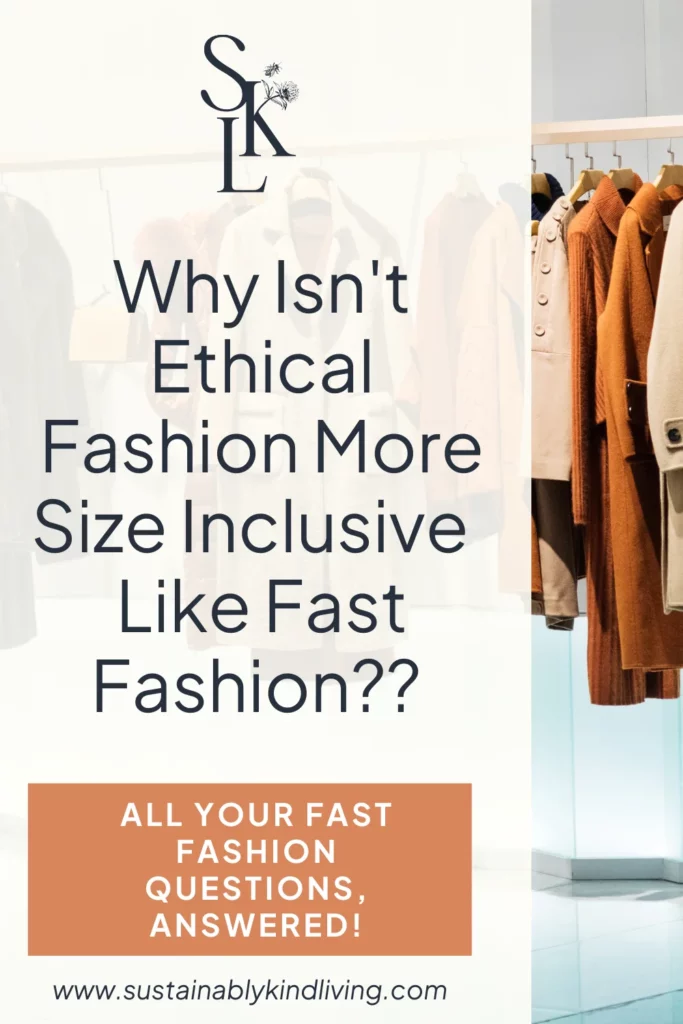
The fashion industry has long had an exclusion problem, catering to the thin, white, and wealthy. It’s a massive problem. Especially given that this narrow vision of who the fashion industry should serve leaves out a majority of people. Ultra-fast fashion brands are some of the first brands to attempt to address this gap in the fashion market at scale.
Before we give fast fashion too much credit for being inclusive– they are taking advantage of a sizable money-making opportunity.
The average American woman’s size is between 16-18 with 67% of women being size 14 or above. Size 14 is often considered the benchmark for plus size. Therefore, brands that don’t cater to sizes 14+ are leaving a lot of money on the table. Fast fashion has recognized that and used their production scale to create more inclusive sizes to capture more of the market.
Standardization of sizing:
Besides size discrimination, the fashion industry has avoided extended sizing as a result of the standardization of sizing that came with increased mass production in the first half of the 20th century.
Standardization and mass production prioritizes efficiency and simplified processes. Creating extended size clothing requires creating new sewing patterns and designs— not just adding fabric to an existing design.
Therefore, brands don’t prioritize extended sizing due to the need to hire specialized designers and pattern-makers. Brands will cite the cost of these hires and the need to buy more supplies as a barrier. But they are ignoring the market demand that would make-up for these investments. No one deserves to be left out strictly due to size.
If you’re a plus-sized person and feel that your options are limited, that’s because they are.
Plus-sized sales make up 19% of the U.S. apparel market. Given that 67% of women are considered plus-sized, there’s a clear gap in availability of options on the market. Such a small percentage of the fashion industry actually caters to extended sizing.
Then, when you consider how sustainable brands only make up a small portion of fashion, as well, it’s clear that inclusive sizing in sustainable fashion is going to be even more limited. Then, within that small selection of inclusive, sustainable brands, you have to hope that at least some of those brands appeal to your personal style and fit in your budget. It’s understandable to view fast fashion as your only option when the industry clearly hasn’t served you.
The plus size apparel market has been growing and is expected to keep growing. Therefore, more brands and sustainable brands will be expanding their collections to be more inclusive and shoppers will have more options. We’ve gathered some of our favorite plus size sustainable brands here and here.
Will sustainable fashion ever be accessible and affordable to everyone?
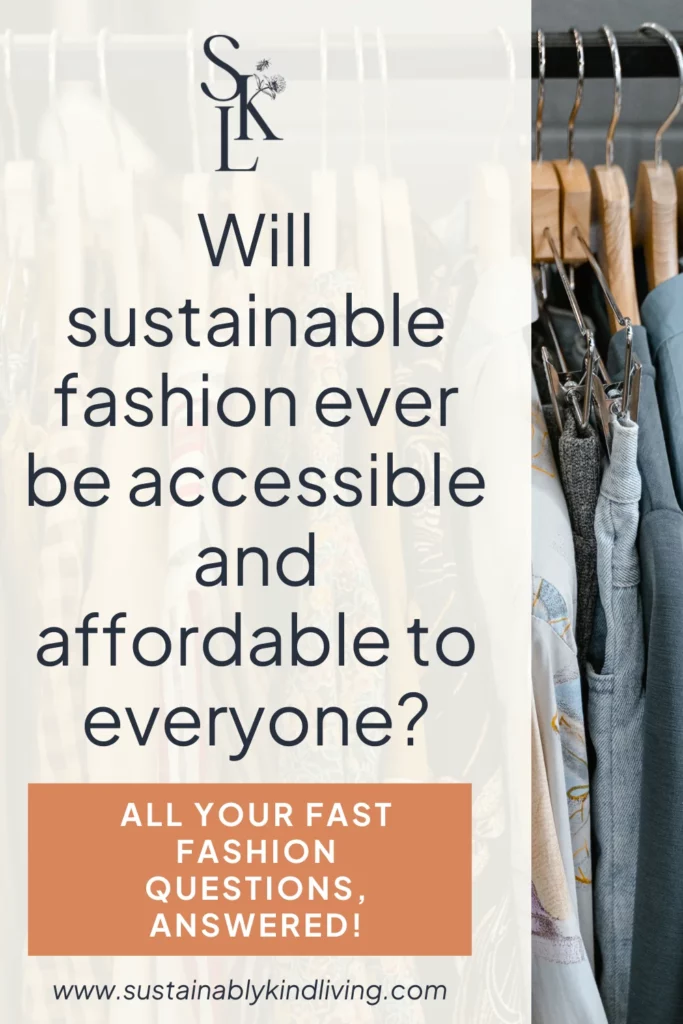
First, let’s reframe and rethink affordability.
We know affordability is relative. Yet, fast fashion has warped our perspective of what is affordable.
Fast fashion has created a culture of excess– one that encourages constant shopping at super low prices. If our expectation is to shop weekly, then an “affordable” price point may look like fast fashion pricing. However, if we are only shopping as needed, our budget for clothing can expand and that investment piece is now more affordable because you’ve saved the money by not allocating it to trend-led, fast fashion pieces. By changing how much we shop, we change what we can afford.
Unfortunately, fast fashion has made the $5 tee our expectation of affordable.
But a garment made at that low of a price comes at a large cost to the garment workers who made it. The lives at stake and the planet that is exploited for low prices can’t afford to keep making $5 shirts. And we can’t afford to live in systems that perpetuate this given the long-term consequences.
Additionally, we can expect sustainable fashion to become more accessible.
As more sustainable technology and innovations are introduced, there will be an increase in sustainable fashion options. Better tech can create more supply chain efficiencies that can drive costs down. More sustainable businesses introduced to market can create healthy competition (not exploitative competition) that can promote solutions that better serve customers and motivate brands to compete on pricing.
The more we move away from fast fashion, the more the industry will invest in sustainable fashion.
More businesses and more variety in sustainable fashion businesses means more opportunities for people to access sustainability.
The root of sustainability and pursuing a sustainable wardrobe is something that is already available to all of us. Sustainable fashion is not buying from a sustainable brand. Sustainable fashion is more about a mindset that prioritizes longevity.
Therefore, the most sustainable things we can do aren’t about shopping at all— they’re rooted in making the most of what exists, caring for and valuing our things, and making intentional decisions. We can pursue those things no matter what label is attached to our clothes.
Why isn’t sustainable fashion more stylish?
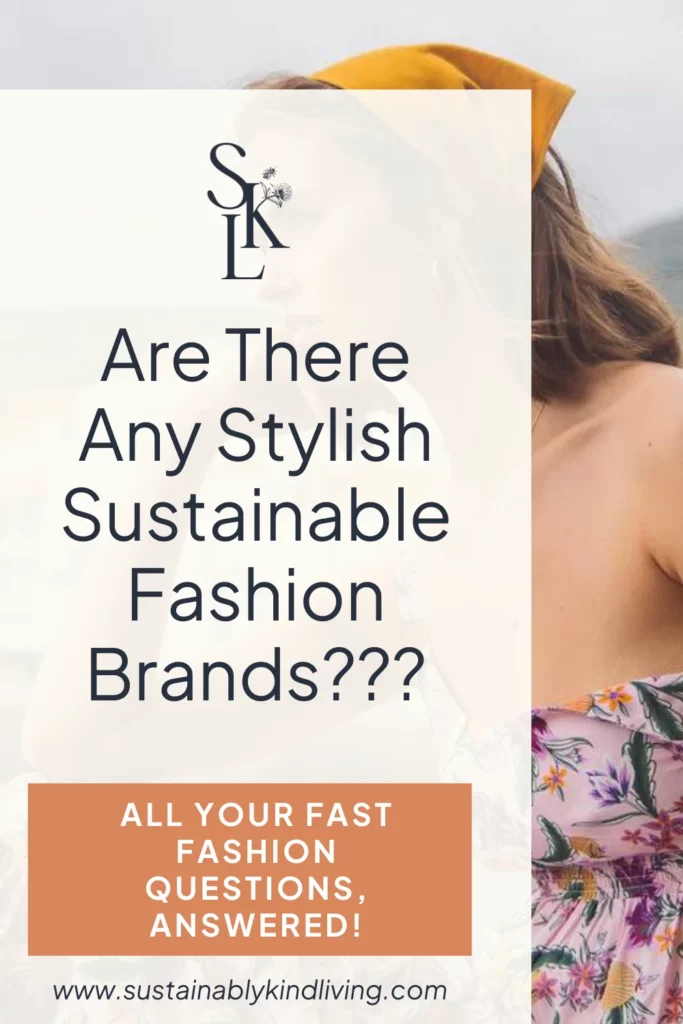
Sustainable fashion can have a reputation for being boring, baggy, and earth-toned. Many have the preconceived notion that sustainable fashion isn’t stylish.
However, there are many eco-friendly brands that are designing amazing, fun pieces.
The key is knowing where to look.
The reason that people may not see sustainable fashion as stylish is because it’s not as “trendy.” A core tenet of sustainability is longevity.
This means that eco brands seek to create clothes that are high-quality and functional that customers will be able to wear for years to come. They aim to create pieces that transcend the trend cycle.
Small sustainable brands produce at a smaller production scale with less releases than a traditional or fast fashion brand.
This means they create less styles but are wanting those styles to be versatile and timeless so that they’ll actually sell instead of getting left behind when the micro-trends change so quickly. This is why you may see less color or variety in styles than a fast fashion brand.
Chasing trends means more production volume, consumption, and waste. Sustainable brands are deliberately trying to avoid that.
However, small, independent, and sustainable brands actually allow for more creativity in our clothes!
By adding clothes to our lives that we really love and want to wear (not motivated by trends), we can lean into our personal style rather than just wearing what everyone else is wearing. It’s worth rethinking– Is something stylish because it’s what’s “in” or does style come from a place of personal expression and creativity? I’d much rather define style for myself than have it marketed to me by exploitative brands.
I can barely afford my bills. How can I be expected to be thinking about sustainability?
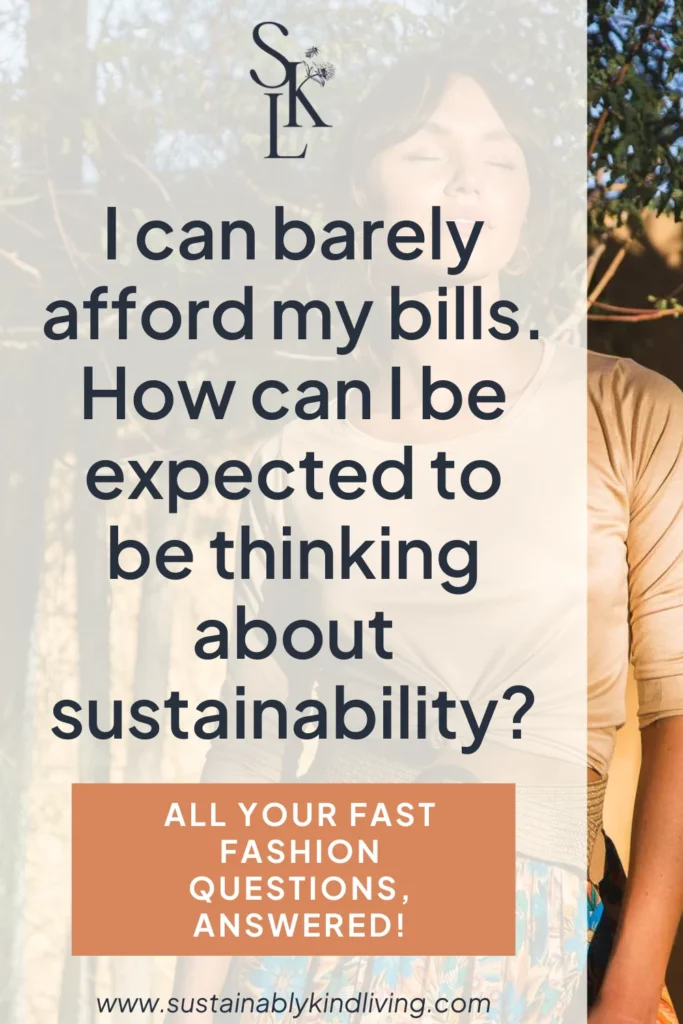
In a time of increased inflation and costs of living, it’s understandable to be worried about making payments.
In times of strain, often our capacity is limited to only be able to meet our own needs.
And that’s okay— do what you need to and take care of yourself! If you’re in a place where you are barely making ends meet, you are unlikely to be contributing to the overconsumption and excess that fast fashion thrives on.
The most sustainable thing you can do is be resourceful, i.e. making the most of what you already have rather than shopping new.
The practices that we use to survive and “get by” such as shopping less, reducing food waste & energy usage, and reusing are often ones that serve the planet, too.
Additionally, I’d encourage you to look at your cash flow. Are you struggling to pay bills because of getting caught in consumption cycles?
Unfortunately, there are a lot of predatory systems that aim to keep people in debt and unhealthy spending habits. Manipulative marketing and financial schemes like “buy now, pay later” can appear to serve the customer while actually trapping them into spending more.
Even fast fashion aims to trap its customers into excess shopping by fabricating trend cycles and making the prices feel “too good to pass up.” By removing yourself from these consumption cycles, you will serve both your wallet and the world.
I can’t shop secondhand or afford sustainable brands. What now?
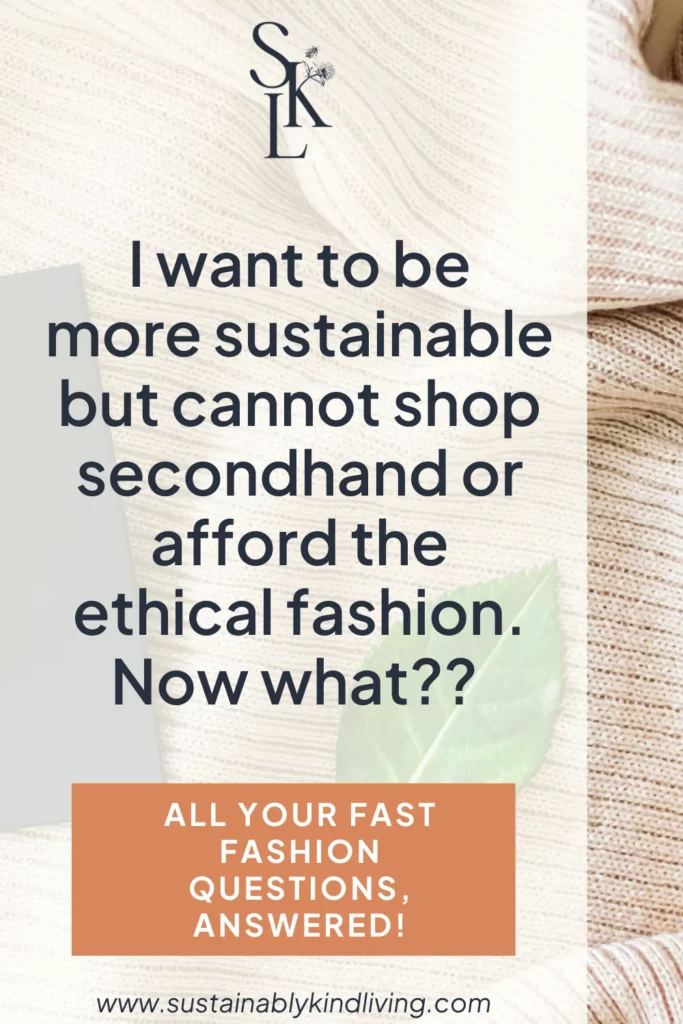
There are many reasons that secondhand may not be accessible to people.
Some barriers to secondhand shopping include: time, physical ability and health, lack of extended sizing, lack of near-by stores or transport to stores, and lack of know-how and thrift overwhelm.
Thrifting can be an incredible tool for taking advantage of what already exists and reducing consumer demand for more. It can be an excellent alternative to fast fashion and one that we can strive for. However, it doesn’t work for everyone. In the same way, not everyone will have access to sustainable brands due to pricing, location barriers, lack of options, etc.
The good news is that, as mentioned before, you can pursue sustainable fashion without shopping from sustainable brands or even shopping secondhand.
Here are some sustainable fashion habits that don’t require you to shop:
- Rewear your existing clothes and make use of what already exists.
- Repair & mend.
- Upcycle.
- Take care of your clothes so they last (gentle laundry habits, proper storage, etc).
- Borrow or swap with loved ones.
- Use community resources like a Buy Nothing group.
- Advocate for system change & use your voice to hold brands accountable.
If you need to purchase something new but can’t shop secondhand or from a sustainable brand, here are some rules of thumb on how to shop sustainably no matter the brand:
- Buy the highest quality you can afford.
- Think long-term (purchase quality and styles you’ll want to wear for years to come).
- Only buy what you need.
- Understand your personal style so you can make decisions in alignment with yourself, not trends.
- Disconnect from consumption patterns.
- Unfollow and unsubscribe from brand marketing.
Sustainable Fashion Questions and Answers
In working through these questions, I hope it’s clear that sustainable fashion and ditching fast fashion isn’t straightforward.
Understanding the complexities associated with how we interact with fashion allows us to have better conversations with our loved ones.
Use these questions and responses to inform and guide future dialogues. Ultimately, we want as many people involved in sustainable solutions and conscious living as we can get! These conversations are really important.
We can best invite people to join our sustainable living efforts with kindness while being equipped with the knowledge to inform why we choose this pathway. A more sustainable future needs everyone on board, doing the best they can with what is available to them!
So, let’s talk about how we can do that with those around us!
If you liked this post, you’ll definitely want to check out these other posts from SKL:
- 11 Surprisingly Effective Ways to Quit Fast Fashion
- Why Is Sustainable Fashion So Important?
- A Full Guide to Building a Capsule Wardrobe
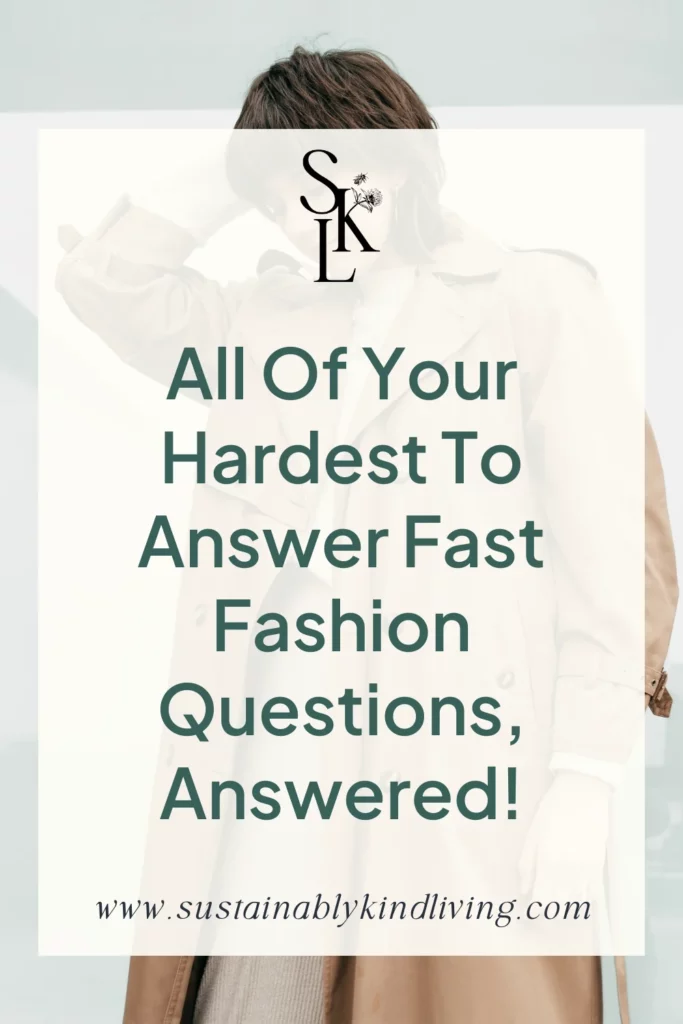
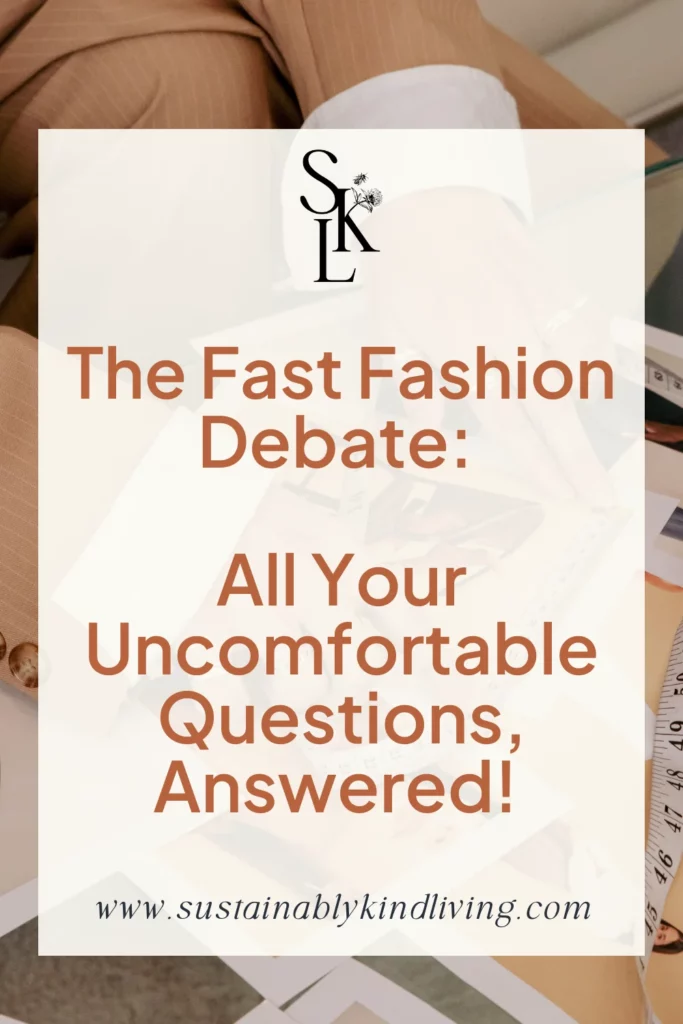
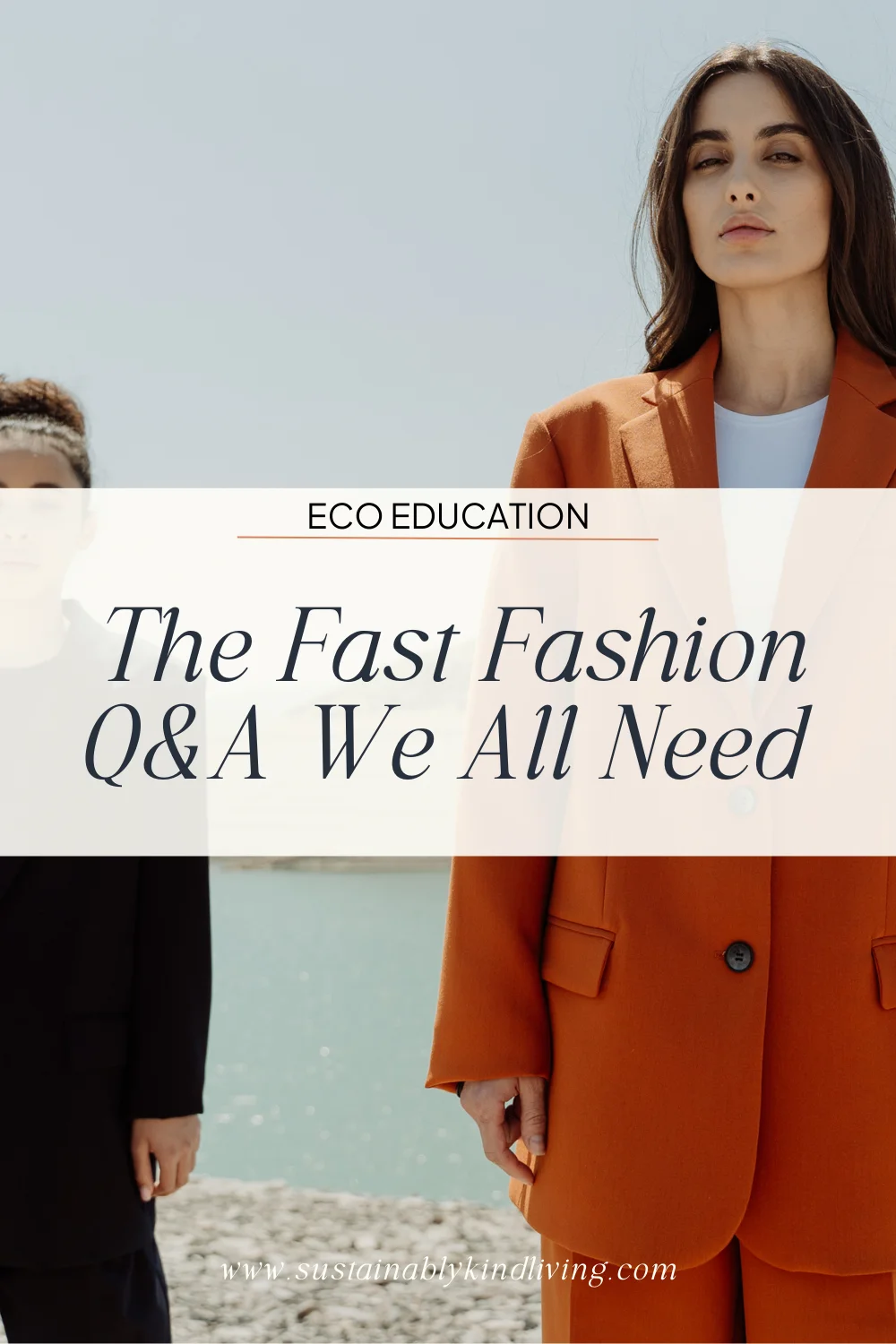
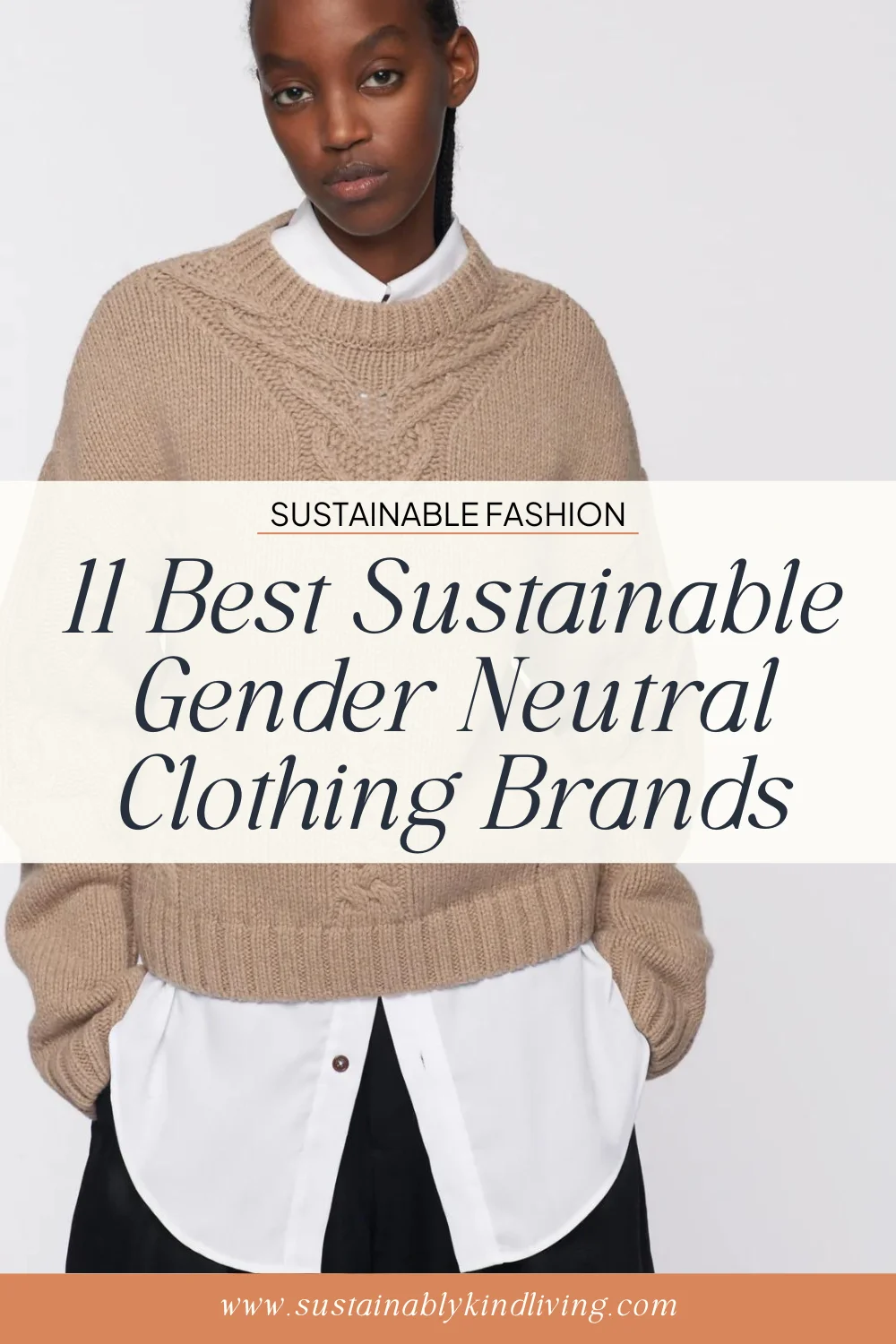
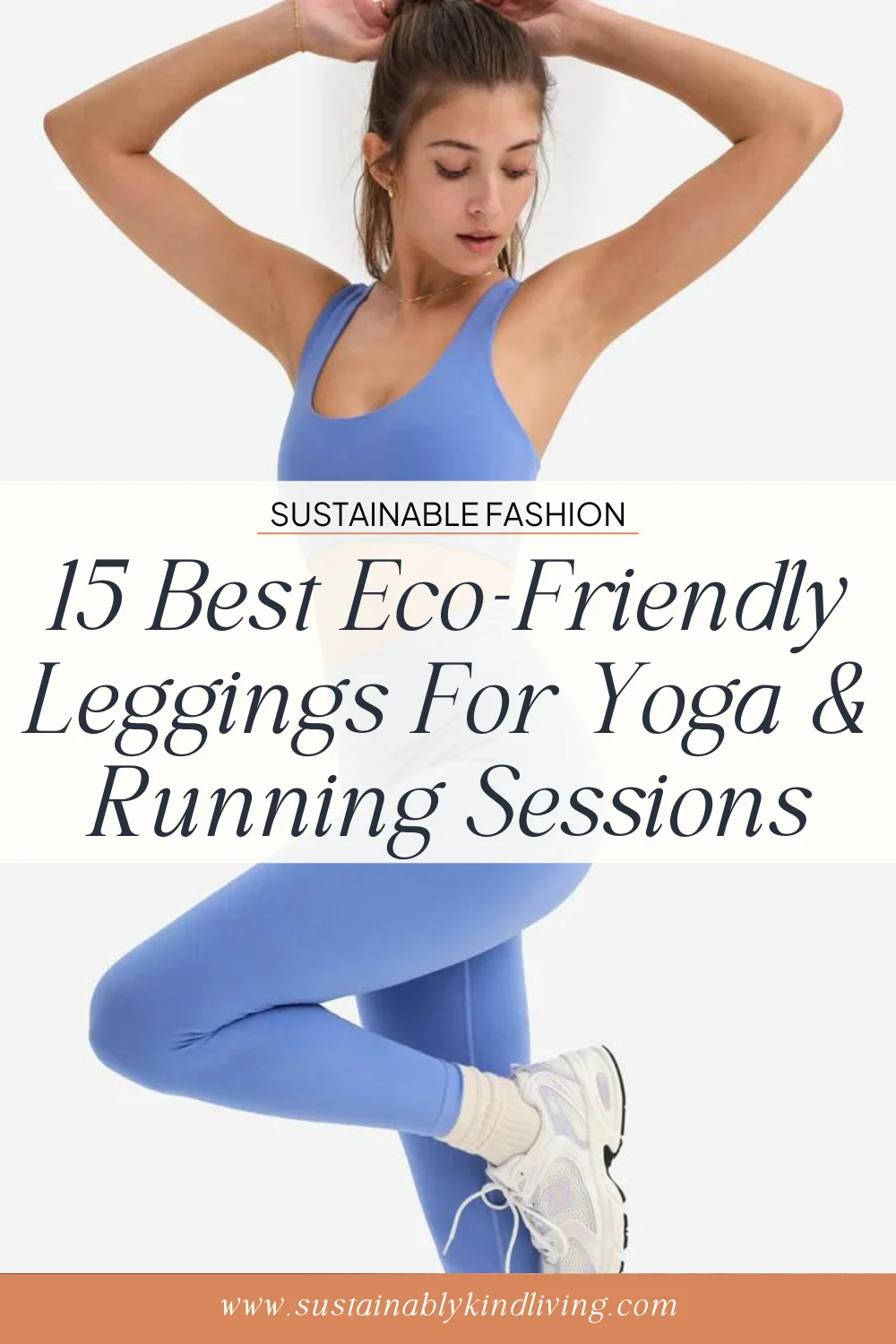
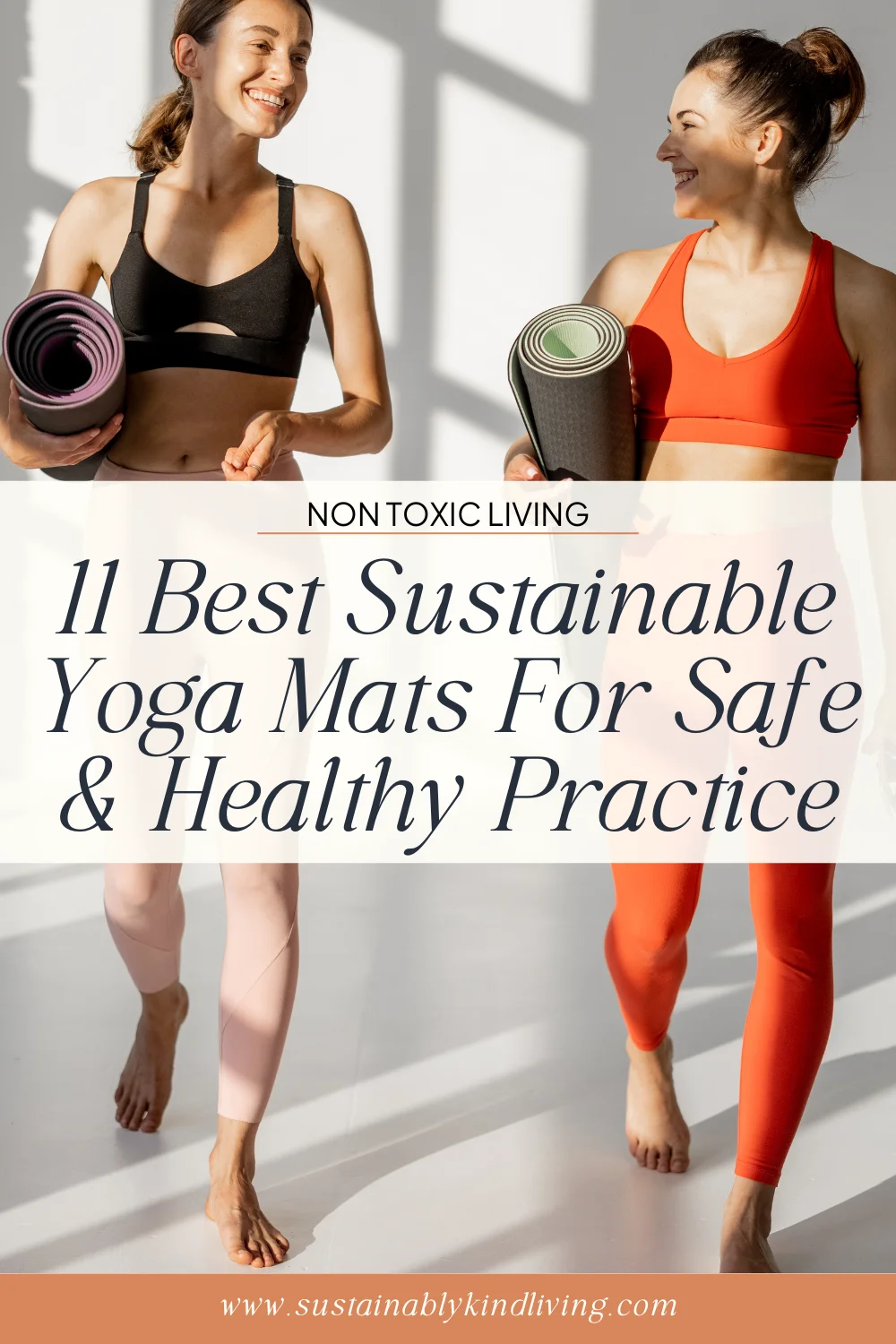

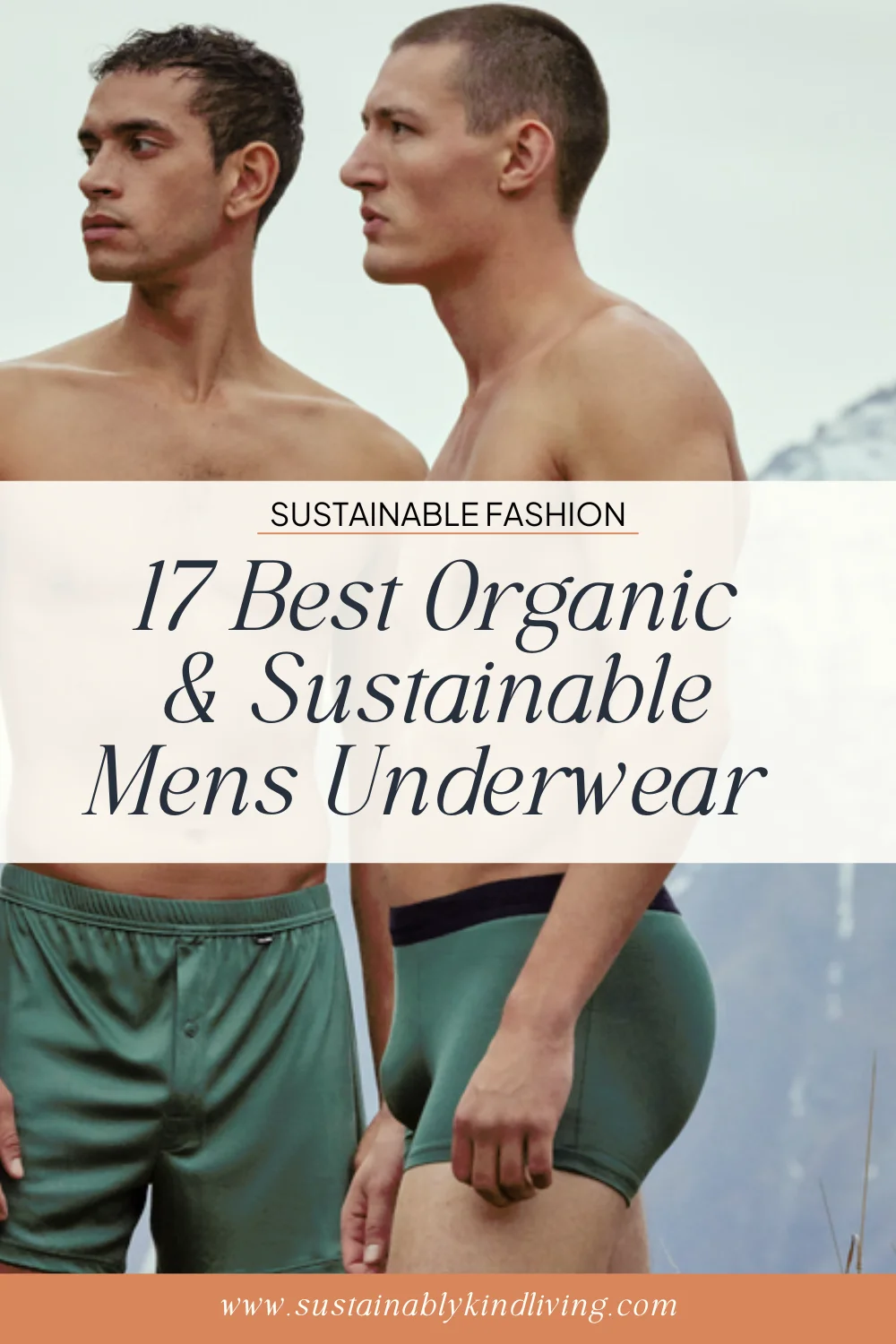
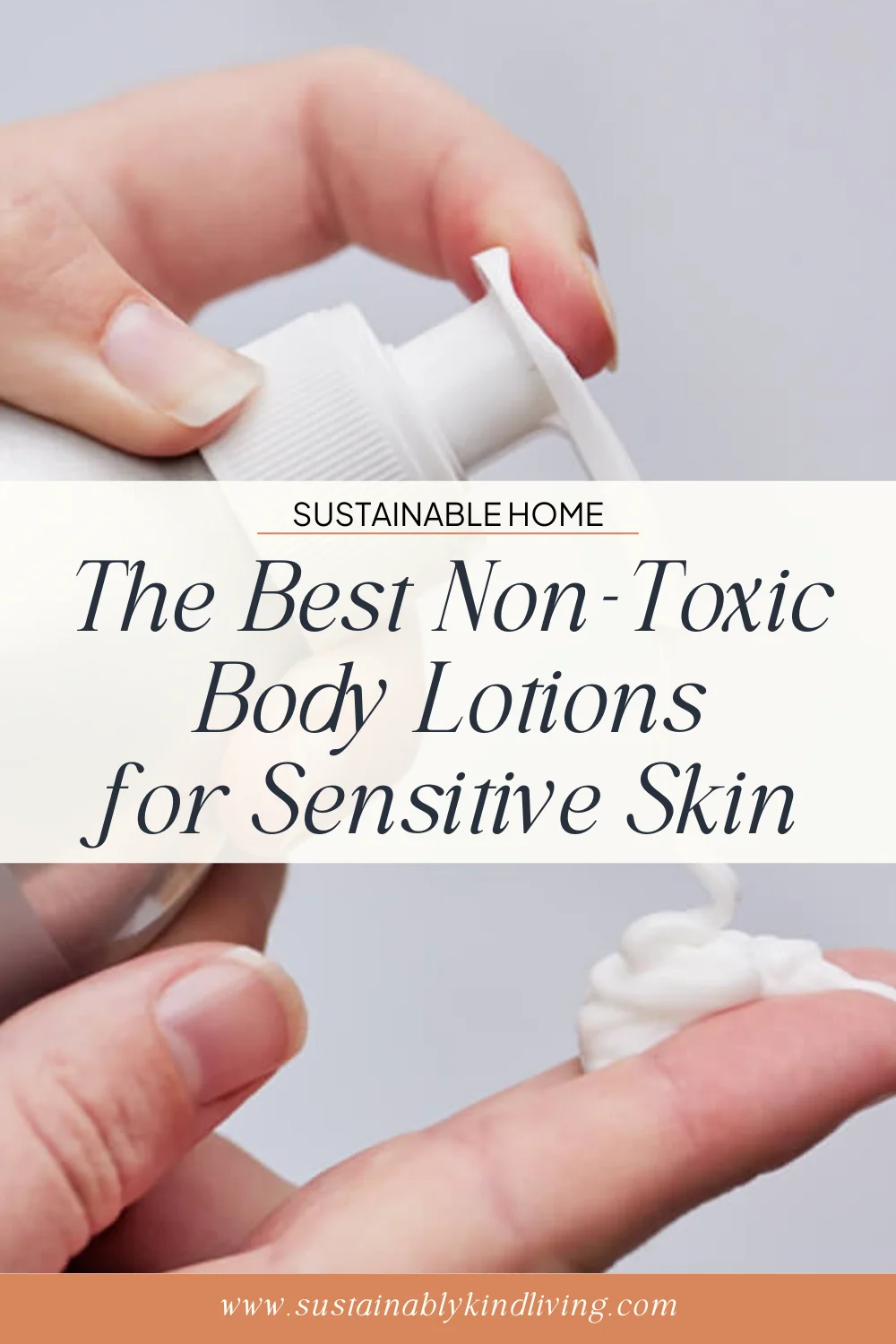

Thank you so much for the lovely write up. I stumbled across this by accident and was pleasantly surprised.
Thank you! So happy to hear 🙂